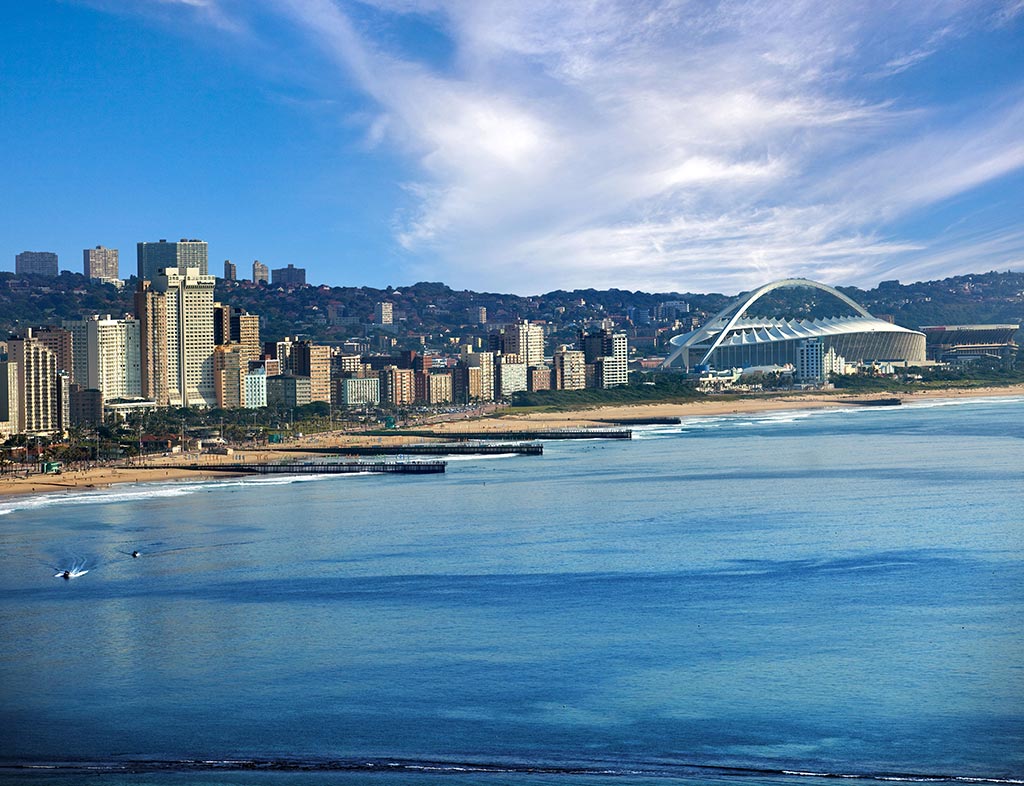中文 |

KwaZulu-Natal Province, South Africa
2017-07-14 17:19 Click:

Area: 94,361 sq. km
Population: 10,919,100
Capital: Pietermaritzburg
Overview
KwaZulu-Natal also referred to as KZN or Natal and known as "the garden province") is a province of South Africa that was created in 1994 when the Zulu bantustan of KwaZulu ("Place of the Zulu" in Zulu) and Natal Province were merged. It is located in the southeast of the country, enjoying a long shoreline beside the Indian Ocean and sharing borders with three other provinces and the countries of Mozambique, Swaziland and Lesotho. Its capital is Pietermaritzburg and its largest city is Durban.
During the 1830s and early 1840s, the northern part of what is now KwaZulu-Natal was occupied by the Zulu Kingdom while the southern part was, briefly, the Boer republic of Natalia before becoming, in 1843, the British Colony of Natal. KwaZulu remained independent until 1879.
KwaZulu-Natal is the birthplace of many notable figures in South Africa's history, such as Albert Luthuli, the first non-white and the first person from outside Europe and the Americas to be awarded the Nobel Peace Prize (1960); Pixley ka Isaka Seme, the founder of the African National Congress (ANC) and South Africa's first black lawyer; John Langalibalele Dube, the ANC's founding president; Mangosuthu Buthelezi, the founder of the Inkatha Freedom Party (IFP); Anton Lembede, the founding president of the ANC Youth League; Jacob Zuma, the current President of South Africa; and Bhambatha, a 19th-century Zulu chief who became an anti-apartheid icon.
Two areas in KwaZulu-Natal have been declared UNESCO World Heritage Sites: the iSimangaliso Wetland Park and the uKhahlamba Drakensberg Park.
Economy
Durban is a rapidly growing urban area and is by most measures the busiest port in Africa. A good railway network links the city to other areas of Southern Africa. Sugar refining is Durban's main industry. Sheep, cattle, dairy, citrus fruits, corn, sorghum, cotton, bananas, and pineapples are also raised. There is an embryonic KwaZulu-Natal wine industry. Other industries (located mainly in and around Durban) include textile, clothing, chemicals, rubber, fertiliser, paper, vehicle assembly and food-processing plants, tanneries, and oil refineries. There are large aluminium-smelting plants at Richards Bay, on the north coast.
To the north, Newcastle is the province's industrial powerhouse, with Mittal Steel South Africa (previously ISPAT/ISCOR) and the Karbochem synthetic rubber plant dominating the economy. In 2002, Newcastle became the largest producer of chrome chemicals in Africa with the completion of a chrome-chemical plant, a joint-venture project between Karbochem and German manufacturing giant Bayer. Other large operations include a diamond-cutting works, various heavy engineering concerns, the Natal Portland Cement (NPC) slagment cement factory, and the Newcastle Cogeneration Plant (old Ingagane Power Station). This was recommissioned as Africa's first gas-fired power station by Independent Power Southern Africa (IPSA), and it supplies the Karbochem Plant with electricity. The textile industry is a major employer in the Newcastle area, with over 100 factories belonging to ethnic Taiwanese and Chinese industrialists. Maize, livestock and dairy farmers operate on the outskirts of the city. Coal is also mined in the Newcastle area. The province as a whole produces considerable amounts of coal (especially coke) and timber.
Offshore mining of heavy mineral sands including minerals with a concentration of significant economic importance at several locations, such as rutile, ilmenite and zircon are threatening the marine ecology of KwaZulu-Natal's coast, including the Tugela Banks; the fishing economy of the prawn and nurse fisheries are also threatened.
About 86% of the population is Black African. During apartheid, a large percentage of native blacks was forced to live in Bantu homelands (Bantustans), which had a subsistence economy based on cattle raising and corn growing.
Ecology tourism is increasingly important to the economy of KwaZulu-Natal. The area's rich biodiversity and efforts at conservation have been recognised. Tourists have come to see the iSimangaliso Wetland Park and the uKhahlamba Drakensberg Park, declared UNESCO World Heritage Sites. These two major parks and that of Ndumo have wetlands of international importance listed as Ramsar sites for conservation. Tourists pay up to $10,000 for safaris on which they might see lions, elephants and giraffes. Others come to hike in the mountains or explore the wetlands with guides.
The Ingonyama Trust owns 32% of all the land in KwaZulu-Natal.
Sister Relationship
On 25 October 2005, Ms. Wang Meixiang, Vice Governor of Fujian visited KZN Province and signed the MOU to establish friendly relationship between Fujian and KZN with the Hon. Sibusiso Ndbele, Premier of KZN
On 13 December 2006, Huang Xiaojing, the Governor of Fujian and the Hon. Sibusiso Ndbele signed the Agreement between the Province of Kwazulu-Natal of the Republic of South Africa and the Province of Fujian of the People’s Republic of China on the Establishment of Friendship Province Relationship in Fuzhou.
Links:
http://www.kznonline.gov.za/